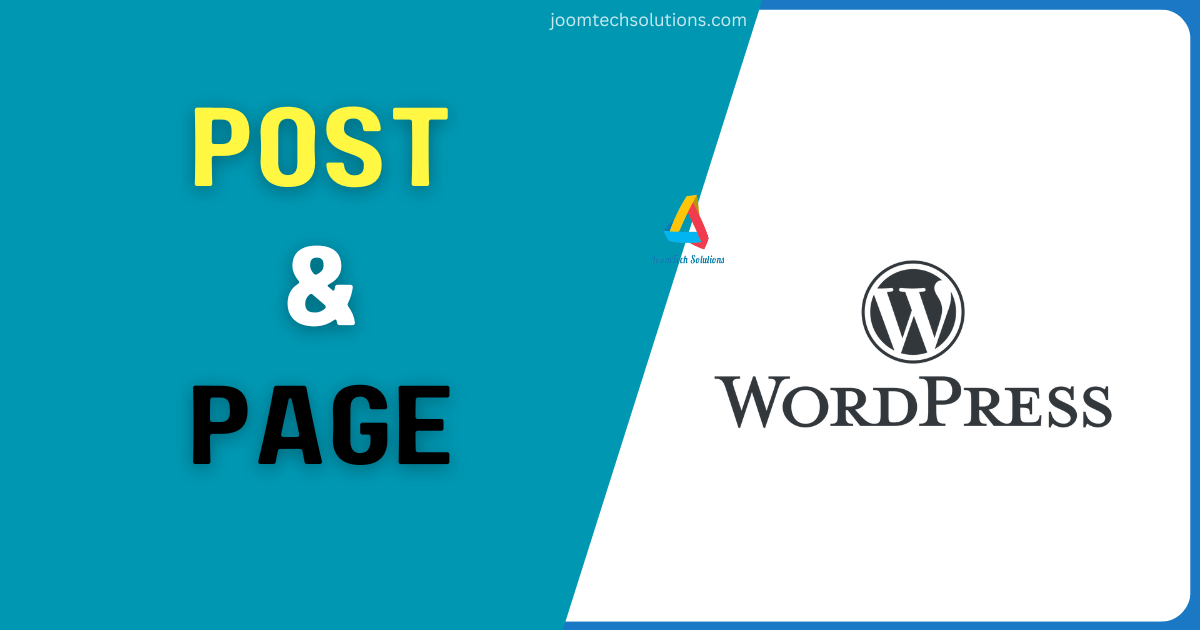WordPress is world world-famous content management system. It is user-friendly and the most extensible cms that can be setup easily. Normal users can manage WordPress without learning core programming. In this tutorial, we will learn the difference between a page and a post in wordpress.
Difference Between a Page and a Post in WordPress
WordPress manages two types of content management methods pages and posts.
What are Posts?
Posts are the individual articles or entries that are created by bloggers on your blog on a WordPress website. It is created frequently daily or weekly with the latest content. It can be your thoughts, news, songs, quotes or any type of information that you want to share with your followers.
Key Characteristics of Posts
- Time-based: Posts are typically displayed in reverse chronological order, with the newest posts appearing at the top. This encourages readers to return for fresh content.
- Categorization and Tagging: You can organize posts into categories (like “Tech,” “Lifestyle”) and add specific tags (like “WordPress,” “tutorial”) to help visitors find related content.
- Comments and Interaction: Posts often allow comments, fostering a community around your content and encouraging engagement.
- Featured Images: A visually appealing featured image can grab attention and represent the post’s content.
- Excerpts: A summary of the post can be displayed in search results or post listings.
- Formats: Many WordPress themes offer different post formats (like images, video, audio, and quotes) to enhance the content presentation.
- Custom Fields: You can add extra information to posts beyond standard fields using custom fields.
How Posts Contribute to Your Website
- Search Engine Optimization (SEO): Well-written, keyword-optimized posts can improve your website’s search engine rankings.
- Audience Engagement: Posts provide a platform for interacting with your audience through comments and social sharing.
- Building Authority: Consistently publishing valuable content establishes you as an expert in your field.
- Driving Traffic: Posts can attract visitors from search engines, social media, and other sources.
In essence, posts are the dynamic content that keeps your audience coming back for more. By effectively utilizing posts, you can build a thriving online community and achieve your website’s goals.
What are Pages?
WordPress Pages are the base of your website’s structure,
WordPress Pages are the base of your website’s structure, using this we create static content. Unlike posts, which are time-based and appear in chronological order, pages are designed to provide persistent information about your business, services, or personal details.
Key Characteristics of WordPress Pages
- Static Content: Pages are ideal for content that remains consistent, such as your homepage, about us page, contact information, or privacy policy.
- Hierarchical Structure: You can create a hierarchical organization by creating parent and child pages. For example, an “About Us” page could have child pages for “Our Team” and “Company History.”
- Navigation Menu: Pages are typically included in your website’s navigation menu, making them easily accessible to visitors.
- No Comments (Usually): While it’s possible to enable comments on pages, it’s generally not recommended as they are primarily for static content.
- Page Templates: Many WordPress themes offer different page templates to customize the layout and functionality of specific pages.
What are the Common Uses for WordPress Pages?
- Homepage: The main entry point to your website, It is also called the landing page.
- About Us: Information about your business, mission, and team.
- Contact Page: Provides contact details and a contact form.
- Services Page: Outlines the products or services you offer.
- Portfolio: Showcase your work or projects.
- Privacy Policy: Legal information about data handling.
- Terms and Conditions: Outline the terms of service for your website.
How to Creating and Managing WordPress Pages?
To create a new page in WordPress, follow these steps:
- Log in to your WordPress dashboard.
- Navigate to the “Pages” menu on the left sidebar.
- Click “Add New.”
- Give your page a title and add content.
- Choose page attributes (parent page, template, etc.)
- Publish or save as a draft.
You can edit, duplicate, or delete pages from the “All Pages” screen.
By effectively utilizing WordPress pages, you can create a well-structured and informative website that meets the needs of your visitors.

